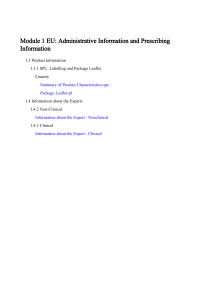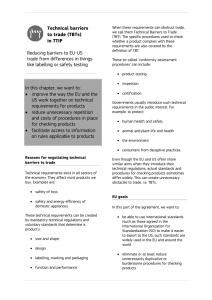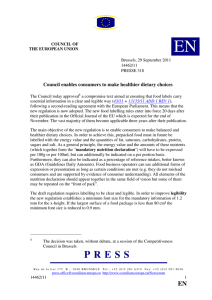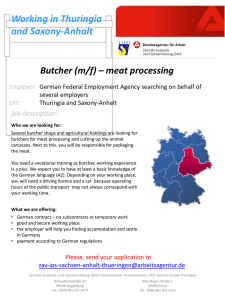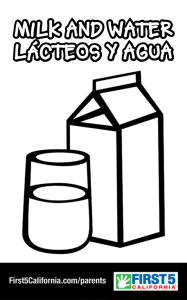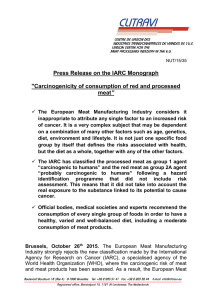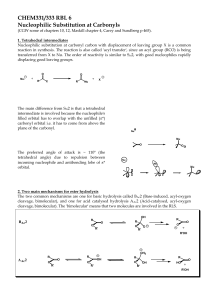Origin labelling on food
Anuncio
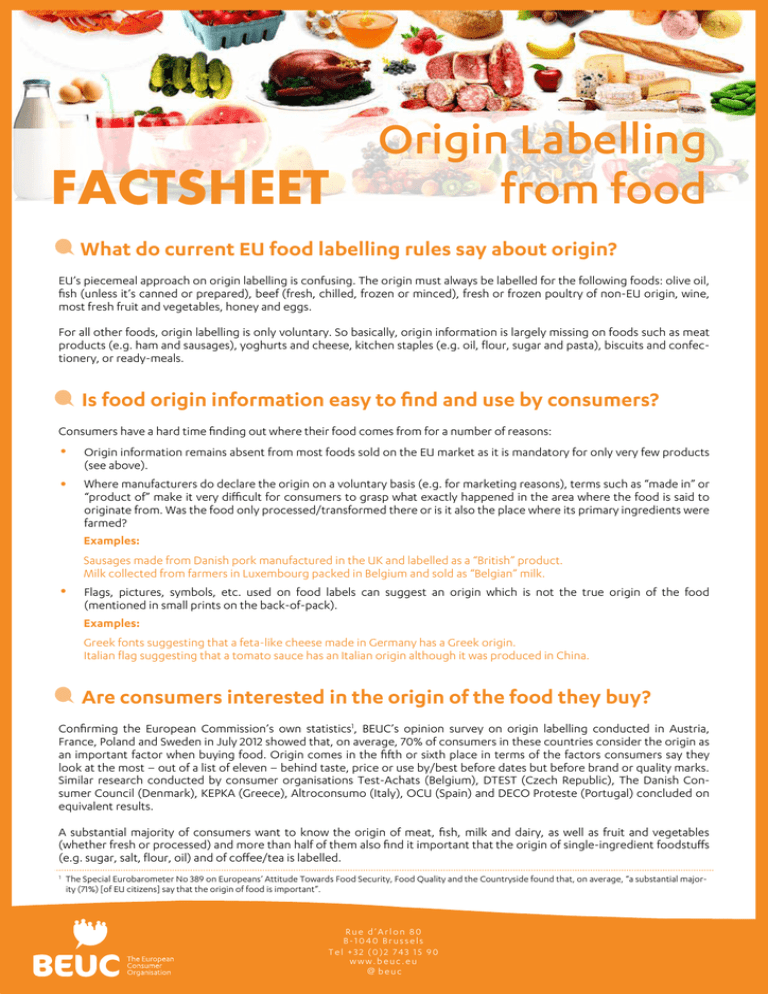
Origin Labelling from food FACTSHEET What do current EU food labelling rules say about origin? EU’s piecemeal approach on origin labelling is confusing. The origin must always be labelled for the following foods: olive oil, fish (unless it’s canned or prepared), beef (fresh, chilled, frozen or minced), fresh or frozen poultry of non-EU origin, wine, most fresh fruit and vegetables, honey and eggs. For all other foods, origin labelling is only voluntary. So basically, origin information is largely missing on foods such as meat products (e.g. ham and sausages), yoghurts and cheese, kitchen staples (e.g. oil, flour, sugar and pasta), biscuits and confectionery, or ready-meals. Is food origin information easy to find and use by consumers? Consumers have a hard time finding out where their food comes from for a number of reasons: • • • Origin information remains absent from most foods sold on the EU market as it is mandatory for only very few products (see above). Where manufacturers do declare the origin on a voluntary basis (e.g. for marketing reasons), terms such as “made in” or “product of” make it very difficult for consumers to grasp what exactly happened in the area where the food is said to originate from. Was the food only processed/transformed there or is it also the place where its primary ingredients were farmed? Examples: Sausages made from Danish pork manufactured in the UK and labelled as a “British” product. Milk collected from farmers in Luxembourg packed in Belgium and sold as “Belgian” milk. Flags, pictures, symbols, etc. used on food labels can suggest an origin which is not the true origin of the food (mentioned in small prints on the back-of-pack). Examples: Greek fonts suggesting that a feta-like cheese made in Germany has a Greek origin. Italian flag suggesting that a tomato sauce has an Italian origin although it was produced in China. Are consumers interested in the origin of the food they buy? Confirming the European Commission’s own statistics1, BEUC’s opinion survey on origin labelling conducted in Austria, France, Poland and Sweden in July 2012 showed that, on average, 70% of consumers in these countries consider the origin as an important factor when buying food. Origin comes in the fifth or sixth place in terms of the factors consumers say they look at the most – out of a list of eleven – behind taste, price or use by/best before dates but before brand or quality marks. Similar research conducted by consumer organisations Test-Achats (Belgium), DTEST (Czech Republic), The Danish Consumer Council (Denmark), KEPKA (Greece), Altroconsumo (Italy), OCU (Spain) and DECO Proteste (Portugal) concluded on equivalent results. A substantial majority of consumers want to know the origin of meat, fish, milk and dairy, as well as fruit and vegetables (whether fresh or processed) and more than half of them also find it important that the origin of single-ingredient foodstuffs (e.g. sugar, salt, flour, oil) and of coffee/tea is labelled. 1 The Special Eurobarometer No 389 on Europeans’ Attitude Towards Food Security, Food Quality and the Countryside found that, on average, “a substantial majority (71%) [of EU citizens] say that the origin of food is important”. Rue d’Arlon 80 B-1040 Brussels Tel +32 (0)2 743 15 90 www.beuc.eu @ beuc What should food labels say about the origin of our food? The vast majority of consumers want to know the specific country – if not the specific region – their food comes from. Only a small minority of consumers (around 10% or even less) would be satisfied with a mere indication of whether or not a food comes from the EU. Current labels are inadequate in another way. For processed meat products, most consumers would like to know both the country where the animal was farmed and the country where the meat was further processed into e.g. bacon, ham or sausages. Likewise, for a jar of jam or a tomato sauce, most consumers would like to know both the country where the fruits were harvested and the country where they were transformed into the final food product. This information is absent from current food labels. What happens next? The new EU food labelling legislation that will apply as from December 20142 aims at increasing transparency about the origin of food sold on the EU market: • As of April 2015, fresh, frozen and chilled meat of pig, poultry, sheep and goat will have to display the animal’s country of rearing and slaughter. Still nothing about the birthplace regrettably. • When the origin of a food is voluntarily declared by the manufacturer, consumers will have to be informed of whether the food’s primary ingredient(s) have a different origin. However, implementing rules remain to be drafted by the European Commission so that this measure can apply effectively. • In December 2013, the European Commission published a report on origin labelling of meat ingredients. It will serve as a basis for the European Parliament and Council to decide whether mandatory COOL should be introduced for meat used in sausages or ready-meals. While the report states COOL for processed meat would entail major extra costs, other estimates found that labelling beef origin in a lasagne would cost only €0,0153. • By the end of 2014, the European Commission will produce two reports looking at the feasibility of extending mandatory origin labelling to additional categories of food (e.g. milk and milk used in dairy, single-ingredient foods). BEUC recommendations for clear and meaningful consumer information on food origin • • • • 2 3 Rules for origin labelling on meat of pig, poultry, sheep and goat should follow those already in place for beef (i.e. “origin” covering the place(s) of birth, rearing and slaughter). Origin labelling should become mandatory for meat used as an ingredient in processed foods, milk (incl. when used as an ingredient in dairy), unprocessed foods (e.g. pre-cut fruit and vegetables), single-ingredient foods (e.g. flour, sugar, oil) and ingredients that represent more than 50% of a food. Origin labelling on food should be (at least) at the country level. The origin of a food’s primary ingredient(s) should be defined as the place of farming of the raw materials (e.g. wheat for flour used in a cake; sugar beets/canes for sugar used in chocolate; milk for cheese or pig for ham used on a pizza). Regulation (EU) 1169/2011 on the provision of food information to consumers. UFC Que Choisir. December 2013. Indication de l’origine de la viande de bœuf dans les produits transformés. BEUC-X-2013-005 – January 2013 (updated in August 2014) Co-funded by the European Union

